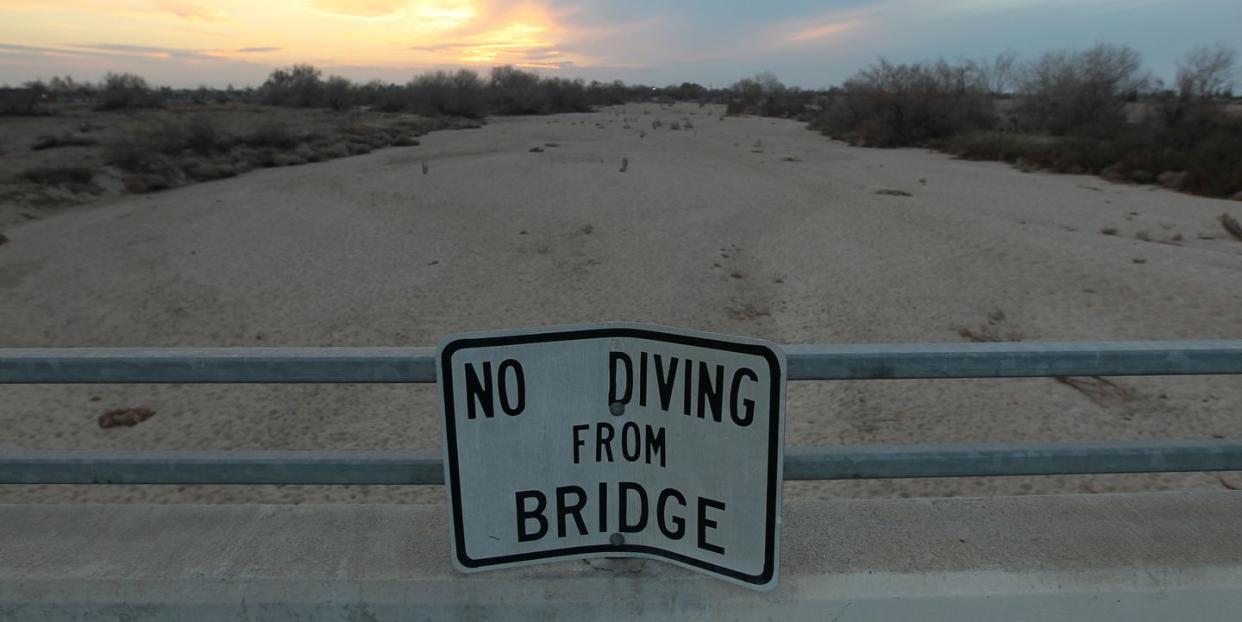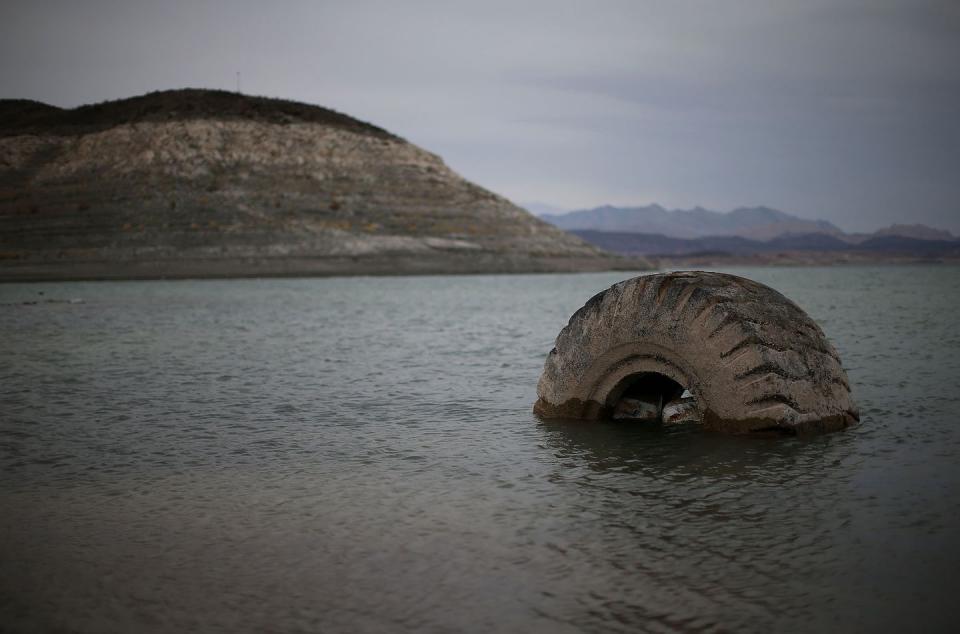Where Will You Be for the Aquapocalypse?

While we’re on the subject of the environment, let’s open another installment of our continuing series, Water: How Does It Work Anyway? In The New York Times, we discover that those daffy Chinese climate hoaxers are helping Arizona build a business-friendly environment by moving all that inconvenient water out of the way.
Among the most vulnerable aquifers are those underlying the desert basins of the American Southwest. The Sulphur Springs Valley, in Arizona’s far southeastern corner, is one such basin. Surrounded on three sides by steep mountain ranges, the valley is an unusually flat and level 1,900-square-mile expanse of sagebrush and tanglegrass, which acts as a massive natural vessel for rain and snowmelt. In geological terms, it is a “closed basin,” as none of its water rejoins a river. Instead, it pools at the center, percolating into the ground. Centuries of evaporation have transformed this ancient lake bed into a dry alkali flat, inhabited today by a migratory roost of 30,000 sandhill cranes. Beneath it, buried in layers of sediment, lies all the water that never flowed to the ocean. Some of it is more than 20,000 years old.
And it doesn’t look like it’s going to last 20,000 more, that’s for sure, at least if a NASA study of the aquifers is accurate.
The mission began in 2002, with the launch of the Gravity Recovery and Climate Experiment (Grace), two satellites that follow each other in orbit, measuring changes in gravitational pull. The mission’s primary purpose was to look at ice-sheet depletion, but over the next several years Dr. Jay Famiglietti, the senior water scientist at NASA’s Jet Propulsion Laboratory, and his team noticed that many of the most significant sites of water loss were actually below ground.

Of the planet’s 37 major aquifer systems, they discovered, 21 were on the verge of collapse. In the Great Plains, farmers had exhausted a third of Ogallala’s potable water in just 30 years. In California, the Central Valley aquifer was showing signs that it could drop beyond human reach by the middle of this century. But the worst declines were in Asia and the Middle East, where some of the planet’s oldest aquifers were already running out of water. “While we are so busy worrying about the water that we can see,” Famiglietti told me, “the water that we can’t see, the groundwater, is quietly disappearing.”
You know what the answer is? Deregulation!
Squeezed by drought and tightening regulations, large farms started to seek out lesser-known pockets of cheap water. In rural Arizona, where there are essentially no groundwater regulations governing irrigation, they found an ideal destination. “What the smart money is doing is looking around and saying, ‘Where else can we go where there is no regulation?’ ” Robert Glennon, a professor of water law and policy at the University of Arizona and the author of “Water Follies,” told NPR in an interview. “And that is Arizona.”
Ah, but the globalized economy will save our thirsty selves.
Arizona was particularly attractive to Middle Eastern farmers. A policy of unregulated pumping on the Arabian Peninsula had, in 40 years, drained aquifers that had taken 20,000 years to form, leaving thousands of acres fallow and forcing Saudi Arabia and others to outsource much of their agricultural production. In 2014, a Saudi Arabian-owned company, the Almarai Corporation, bought 10,000 acres in the town of Vicksburg, northwest of Sulphur Springs Valley, planting alfalfa to ship halfway around the world to feed Saudi cattle. Then, a United Arab Emirates farming corporation, Al Dahra, bought several thousand-acre farms along both sides of the Arizona-California border.
And I’m sure that this would be well-received by local Arizona farmers, given the current climate in this country, from the president* on down, toward people from that part of the world.
These purchases were perfectly legal, but many residents felt these newcomers were essentially “exporting water.” At least once, the Sheriff’s Department in Vicksburg deployed five deputies to stand guard at a town-hall meeting.
The whole story is a saga of interests arrayed against each other, which means people arrayed against each other, and all arrayed against each other over a resource that none of those people ever thought would be finite. This is one of the nightmares, and it’s coming home.
Respond to this post on the Esquire Politics Facebook page here.
('You Might Also Like',)

